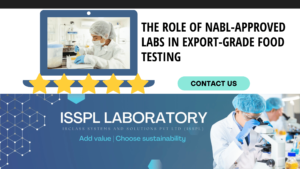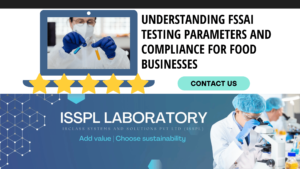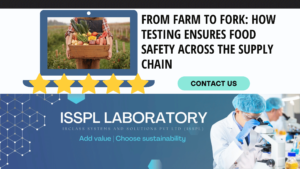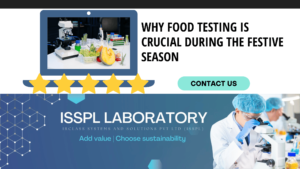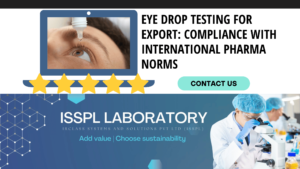An Overview by Team ISSPL - Analytical Testing Laboratory in India
ToggleInjections are critical medical accessories. One cannot neglect their utility in everyday medical operations. From clinics to nursing homes – injections are constant! Have you ever thought of the safety of the injection kit? Following the best-in-class safe injection practices is the only way to stop the chances of spreading germs and infection during healthcare offerings and operations.
Unsafe injection practices – Note them all
There is more than one unsafe injection practice. It includes unnecessary injections, recycling the injection needles and syringes, or using a single package of medication vials for more than one patient. It also includes giving the injection in an unsafe environment. The environmental features may be compromised, dirty, and unhygienic. It also includes the risks of injury and infection for irresponsible and incorrect disposal. It is critical to know more about unsafe injection practices for avoiding them. Know the best ways to safely give injections and discard them with needles and other sharps.
Essential QC techniques for injections
IPQC, or in-production quality control, refers to the process of controlling the steps for manufacturing the dosage components. It includes the entire system, starting from raw materials purchase to developing the end product ideal for packaging.
The QC steps monitor all the essential features of the pharmaceutical product. The features include the ones that may impact its quality, creating potential errors during processing.
Apart from medical drugs, these tests also get performed for injections. It happens between QA and QC. The test results ensure optimal authorization and appropriateness of the product. The IPQC test can include – physical, chemical, microbiologic, and biologic features. The testing delivers accurate, specific, and relevant descriptions of the product.
Checking the leakage in the injection
An injection must never leak. It leads to damage and risks. The leakage test for injections is a visual inspection. It includes a bubble test or dye test, or in some cases, the vacuum ionization test. A leakage test is the ideal way to ensure package integrity. What is package integrity? It exhibits its ability of the package, injection, in this case, contamination-free. Leakage leads to unwanted contamination and discontinuity. In fact, a leakage can allow the passing of gas under high pressure.
The leakage test could be conducted with the help of a dye bath. In the dye bath test, the container gets immersed in the dye bath. The testers apply pressure for some time. After this, the container is removed and washed. The inspection in the further steps determines the presence of the dye. It may be through visual inspection or the UV spectroscope. The color is usually blue, green, or yellowish-green color.
The dye test is effective and widely performed in the industry with worldwide approval. It is affordable and needs no specialized equipment price for visual dye detection. The process is slow but effective.
Uniformity checks and pH levels – Clarity testing
Apart from leakage, clarity plays a critical role. The clarity testing process of an injection is carried out for reviewing the particulate matter in a sample. During this test the transparent or white particles get observed against a dark or black background. And the reverse process is repeated for the dark or black particles. The test gets performed to review the following –
- The impact on the body
- The stability of the product
- The impact on the container-closure system and pH measurement
Reviewing the impurities – Particulate matters checking.
The pharmaceutical products used for parenteral use need to be hygienic and safe. The injection body should be free from unwanted particulate matter and pollutants. It must be lucid in appearance and inspected carefully. There are two methods described for such product examinations. For large-volume parenteral objects or LVPs, the tester carries out a microscopical examination. For the small-volume parenteral objects or SVPs, a light obscuration-based sensor with an electronic liquid-borne particle counter system is implemented for inspection. The USP standards are predefined and critical to maintain.
Sterility test – The crucial benchmark for all injections
With injections, one can never risk the sterility factor. What is it? Sterility or hygiene of the injection is the quality of the product that makes it free from the presence of viable microorganisms. The sterility examination gets conducted, reviewing the presence of viable living organisms, like – bacteria, fungi, and yeast. The sterility test needs to be carried out with strict and well-defined aseptic conditions. It is critical to maintain, avoiding accidental contamination of the injection during sterility test. Based on results obtained from sterility testing of the injection, one can define and assure the safe utilization of the product for medical purposes. It also plays a critical determinant in the sterility of the entire batch.
Significant factors in sterility and QC testing
- There is more to the testing mechanism. If the surroundings are not apt, it is impossible to obtain accurate results. Several factors make an impact on the results, and the environment in which the test gets conducted is the most critical one.
- Apart from the environment, the quality of the cultural process is vital. The sample size and sampling procedure are essential to review as well.
- Having optimal environmental conditions avoid the unwanted contamination risks of the product during the test. The test must be conducted under aseptic conditions with constant microbiological monitoring.
Membrane filtration and sterility check
Among the many aspects, sterility remains the most prominent reason to worry about. The sterilization status of the filtration system and membrane filtration of the sample injection needs to be under aseptic conditions. The membrane filtration process for sterility check is efficient and effective. However, the membrane filtration process is preferred mostly for large-volume parenteral products. But it is a suitable choice for injections for reviewing sterility.
Ensure a hassle-free QC test with the best lab.
With the reliable testing procedures introduced by the top laboratories, report accuracy is out of the question! IRCLASS Systems and Solutions Pvt Ltd (ISSPL) laboratory brings the perfect solution to injection manufacturers and industrialists in the pharmaceutical domain. Ensure the best-in-class testing solutions with reliable test reports, determining optimal quality testing for the injections. Get world-class lab infrastructure for reviewing the pharma products and equipment pieces.

